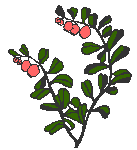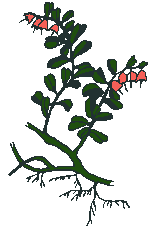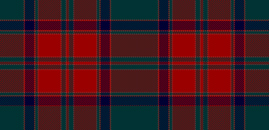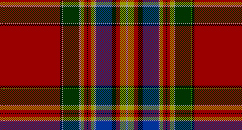Facts and Figures about the Clan Mackintosh
What’s in a name?
Toiseach or toisich is gaelic for chief or thane, thus mac an toisich means ‘son of the thane’ or ‘son of the chief’. The name has been anglicised and therefore today can be spelt in many different ways - we have fifty variations.
However McIntosh, Mackintosh and MacIntosh are the most commonly used today. The clan society uses the version Mackintosh at the request of the late chief, as this is the version his family uses.
There are also a number of accepted septs of the Clan Mackintosh from the Inverness region. Septs are families that through marriage and/or allegience have banded with our clan for protection.
Fifty variations of the name Mac an toisich
Macintoshich
Mac Toshy
Macintosh
Mackintoche
Mackintoshie
MacIntosh
Mackinthoschey
Mackyntoiche
Mackyntoshe
Makin Toshie
Malcomtosh
Malcometoshe
Makynthoschey
Mc yntosach
Mc yntose
Mc ynchosse
M‘Colmetoshe
M‘Intosche
M‘intosh
M‘Intosh
M‘Kintoschis
M‘Kintoschissone
M‘Kintoisch
M‘Kintoshe
M‘Kyntoshe
M‘Kyntoschey
M‘Kyntoysschis
M‘Kyntoshy
Mackintosh
Makintoshe
Makintoich
Makkintoshe
Makintoishe
Makintosche
Mc anetosche
Mc Kintoche
Mc Intosche
Mc Intoshe
Mc Intosh
Mc intosh
M‘Intoshe
M‘inthoschie
M‘inthosych
M‘Kintoshe
M‘Kintosshe
M‘Kintosche
M‘Kyntosy
M‘yntossich
M‘yntosche
M‘Kyntoshchey
Return to top of the page
Accepted Septs
Adamson
Ayson
Aysons (NZ)
Clark
Clarke
Clarkson
Clerk
Crearer
Crerer
Dallas
Elder
Esson
Glen
Glennie
Glenny
Gollan
Heggie
Higgie
Hardie
Hardy
MacAndrew
MacAy
MacCardney
MacClerich
MacChlery
MacConchy
Macglashan
Machardie
Machardy
Machay
Mackeggie
MacKillican
MacLerie
MacNivan
MacRitchie
Niven
Noble
Ritchie
Tarrill
Tosh
Return to top of the page
The Clan Chattan
In the past, the Chief of Clan Mackintosh occupied a dual role as head of his own immediate Clan and as leader of the a broader organisation: "the confederacy of Clan Chattan"
Clan Chattan comes from the gaelic clann gillachattan: ‘gillachattan’ meaning ‘the great servant of St Cattan’. The obvious play on words results in ‘the clan of the cats’ and the highland cat figures in many of the Coats of Arms of the chiefs of the confederate clans.
Angus, sixth chief of Mackintosh in 1291 married Eva, the only daughter of Gilpatric or Dougal Dall, Chief of Clan Chattan in Lochaber. At the death of his father-in-law, Angus succeeded to the lands and chiefship of Clan Chattan, with the approval of the entire clan. He became the seventh Chief of Clan Chattan.
The titles remained co-joined until the death of Alfred, 29th Chief of Clan Chattan and 28th Chief of Mackintosh in 1938. His successor in the Chiefship of Clan Mackintosh was passed by tanistry (direction) to the younger son of his first cousin: Lachlan Mackintosh of Mackintosh. This was the grandfather of the present chief John Mackintosh of Mackintosh, 31st Chief of Mackintosh, and father of the late chief Lachlan who died in December 1995.
Alfred’s successor in the Chattan chiefship was determined by the Lord Lyon, to be his grand-daughter, Arbell of Dalcross and thence to the elder son of his cousin: Duncan Alexander Mackintosh. Today, Duncan’s grandson Malcolm Mackintosh is the 33rd Chief of Clan Chattan.
The Mackintoshs as the principal clan are followed by the Macphersons, Macbeans, Shaws, Macgillivrays, Farquharsons, Davidsons, Phails, MacThomas, MacQueens of Strathdearn, Macleans of Dochgarroch, and the MacIntyres in Badenoch
Most of these clans have individual septs which swell the ranks into a huge organisation of names. The clans were joined by marriage or gathered under the protection of the Mackintosh chiefs, who guided them successfully through the turbulent centuries of Scottish history.
The Clan Chattan Association is a very active worldwide organisation catering for Clan Mackintosh and all other clans in the confederacy of the old Clan Chattan. The chiefs of the confederate members hold positions as Vice-Presidents in the Association under John Mackintosh of Mackintosh as President, and three Overseas Members of Council have been appointed to act as local focal points in their own countries: Australia, Canada and the U.S.A.
Clan Chattan families have migrated to all corners of the globe and place names in many countries bear testament to their pioneering spirit. However, beneath the surface there is still a strong attachment to their Scottish heritage and Clan gatherings all over the world remain popular to this day.
The Annual Gathering of the Clan Chattan occurs at the Highland Field Sports Day at Moy Hall, Inverness on the first Friday and Saturday in August each year. If you would like to know more about the Clan Chattan Association, please email us and we will pass along the contact details for Australian council member.
Return to top of the page
Symbols used by the Clan
War Cry
Loch Moigh! (Loch Moy!)
Pipe music
- The Mackintosh’s Banner (Gathering)
- The Black Rock of Clan Chattan (Gathering)
- The Mackintosh’s Lament (Lament)
- Mackintosh’s Welcome to Grantown-on-Spey
The Clan Badge

The Cairngorm Mountains form the southern boundary of the clan territories and this rugged mountain range is the last remaining habitat of the Highland Wildcat from which the name Clan Chattan, ‘clan of the cats’ is derived. The Highland Wildcat is under threat of extinction. You can read about the efforts to save it at the Scottish Wildcat Association website.

The cat salient is featured in the crest of the Coat of Arms of the Mackintosh chiefs and is a common heraldic symbol of other clans in the Clan Chattan confederacy. The Clan badge contains the crest surrounded by the belt and buckle representing allegience to the Chief.
The motto Touch not the cat bot a glove means Do not touch the cat without wearing gloves a reference to the ferociousness of the untamed animal. It was used by the clan to put fear into the minds of rival clans and give a warning that all the Clan Chattan clans were likely to come out if you disturbed one!
Note: There is no such thing as a ‘Mackintosh family/clan crest or coat of arms’. What are usually marketed by such, are arms belonging to a past chief of the clan: In Scotland, arms are personal property and not assigned to a family or clan. To display arms, you must have specific permission from the owner, however, clan members have the right to display the Clan Badge, provided it is appropriate to do so.
Plant Badge

The red whortleberry, cowberry or Vaccinium vitis-idaea, as it is known to the botanist, is the official plant of the Clan Chattan and Clan Mackintosh.
A member of the heath family or Ericaeceae, the cowberry is a more or less creeping evergreen dwarf-shrub (10-20cm in size). It has rather leathery oval leaves, being broadest in the middle, glossy and with slightly downward in-rolled margins (1-3cm in length).

It has delicate white or pink flowers, being open-mouthed and often in clusters. Flowering usually occurs between May and August. The fruits of the cowberry appear as small edible berries. To cause extra interest and confusion to those interested in this group of plants, the cowberry can also hybridize with another member of the heath family, the bilberry or Blaeberry vaccinium myrtilus.
The Ericaeceae are a widespread family, with members spread throughout the world, somewhat like Clan Chattan. The cowberry also has a widespread distribution, being found in Britain, the Northern and Central parts of Europe southwards to the Pyrenees, Appenines, and the Mountains of the Balkan Peninsula. In the Alps it is even found up to an altitude of 2500 metres. It is a species that is found in a restricted number of habitats, all being notable for their rather acidic ground conditions, usually associated with very peaty soils. The list of habitats is strongly dictated by their geography, especially in Britain, and includes heathlands, moorlands, acidic upland oak and birch woodland and the native Caledonian pine forests. All these habitats are predominantly found in wetter and cooler oceanic and more mountain conditions of Wales, Northern England and Scotland.
As a delicacy, it has rather a bitter taste, and is seldom eaten as a plain fruit, though edible. However, when properly prepated, as with many other sharp fruits, it does make a very fine jelly and preserve, and can be used as a sweet jam or as a condiment to cooked meats.

One additional interest of this rather splendid little plant is its array of local names, especially in Britain; these include the widely used whortleberry and cowberry, as well as clusterberry in Derbyshire, cranberrywire in Kincardineshire, Aberdeenshire, Banffshire and Moray, flowering box in Cheshire, lingberry in Yorkshire and Cumbria, keadya-atchin in Donegal and moonog more widely throughout Ireland. Sadly it is lumped together with bilberry, and is known as llus or duon bach in Welsh.
All in all our clan plant, although small in stature, is certainly one we should not overlook!
Sources we used and books available for further reading:: A Field Guide to the Wild Flowers of Britain and Europe by Thomas Schauer. 1982; Wild Flower Key by Francis Rose. 1981; Culpeper’s Colour Herbal David Potterton. 1983; The Englishman’s Flora by Geoffrey Grigson. 1975; Atlas of the British Flora F.M.Perring, and S.M.Walters 1976; and Clan Chattan Journal No. 9 June 1991.
Return to top of the page
The Clan Tartans
Modern Mackintosh

Bright red base with dark blue and green bands
Ancient Mackintosh

Same as left but the colours are muted
Hunting Tartan

Dark green base with red and blue bands
Ancient Hunting

Same as left but again the colours are muted
Clan Chattan or Chief’s Tartan

Red base with multi-hued fine lines which can look very orange if produced with a light red base
Return to top of the page

